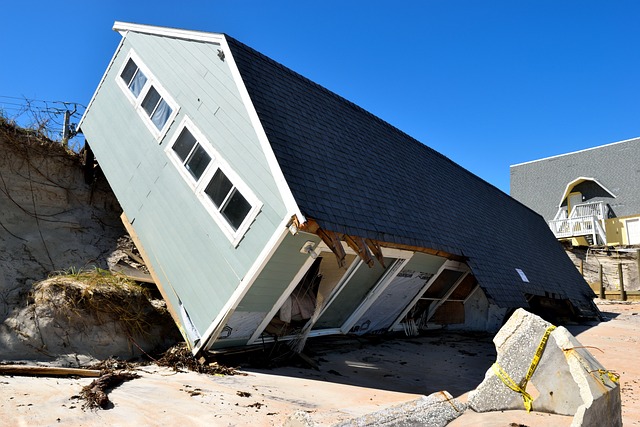Titanic Lifeboat Academy examines this housing information in light of the climate, energy, food, economic and geopolitical risks about which we have spent two decades raising awareness. But, is awareness enough? "Why are Americans still willing to move to disaster zones?"
from Bloomberg, via Governing.com examines that question.
Why Are Americans Still Willing to Move to Disaster Zones?
Despite fires and floods, they keep coming in search of affordability and warm winters. But there are strong signs that the stampede is slowing.
Four years ago, the rise of remote work created a new version of the American dream: No longer forced to live close to the office, millions of people realized they could pull up stakes from New Jersey or wherever and move to sunnier, cheaper places.
Unfortunately, many who made the trip found a nightmare waiting when they arrived: climate change and its accompanying threat of home-destroying natural disasters.
The good news is that destruction and soaring insurance costs might finally be forcing Americans to take climate into account when deciding where to live. The bad news is that, on the whole, they’re still making risky choices — often leaping from figurative frying pans into literal fires.
After years of population booming in regions most exposed to proliferating natural disasters, the stampede has started to slow, a new report from the real estate company Redfin suggests. A net 16,144 people moved into U.S. counties with high flood risk last year, as defined by the climate-research firm First Street Foundation. That’s a striking slowdown from the 383,656 who rushed into those places in 2021 and 2022. And a net 63,365 people moved into high wildfire-risk counties in 2023, compared with 446,343 in the previous two years.
People are flat-out abandoning specific places that have become synonymous with catastrophe, such as California’s wildfire country, disaster-prone Houston, coastal Louisiana and increasingly semiaquatic Miami. Of course, many of those places also have high living costs, so it’s difficult to separate the climate signal from the noise of the more-traditional reasons people move. Surrounding Houston, for example, are bubbles of migration into places that are just as likely to flood as the city, suggesting there’s more to the story than avoiding the weather.
And people ditching houses in Florida as a result of soaring insurance costs and disasters are still managing to find buyers. A net 68,564 people moved into high-flood-risk counties in the Sunshine State last year, accounting for more than half of the country’s total migration into flood zones, according to Redfin.
“Homebuyers tell us they care about climate, but then when it comes to where they’re actually choosing to live and buy homes, they seem to prioritize other things,” Redfin chief economist Daryl Fairweather said in an interview, “namely affordability, but also warm winters, being close to family, amenities and things like that.”
Florida’s Lee County, home to Fort Myers, was one of the country’s hottest destinations again in 2023, as it has been for years, with a net influx of 8,374 people. Even after Fort Myers was devastated by Hurricane Ian in 2022, bargain hunters snatched up properties there before the floodwaters had receded.
Many of them were underwater again after Debby passed by and flooded Florida’s west coast with heavy rainfall and a storm surge. Notably, Debby wasn’t even a hurricane at that point, just a tropical storm — a reminder that you don’t need a cinematic catastrophe to wreak havoc when the air and water are superheated. Mere thunderstorms can do billions of dollars in damage.
Meanwhile, 30,156 people moved to counties in Texas at high risk of wildfire, according to Redfin, accounting for nearly a third of the entire country’s net migration into fire-prone counties last year. Many were fleeing California’s wildfires and high prices just to end up in a state that had only slightly fewer wildfires last year.
Texas even has its own baby version of California’s insurance crisis, with homeowner premiums rising 23 percent last year, the biggest gain in the country, according to S&P Global. Unlike California, where premiums are constrained by regulation, “business-friendly” Texas invites insurance companies to let ’er rip. As a result, Texas has the sixth-highest average annual premiums in the country, according to Bankrate.com.
But these numbers are apparently still not high enough to change the minds of house-hunters. Something has to give. One reason the number of billion-dollar disasters in this country keeps setting records is our dogged insistence on subsidizing the movement of houses, stores, offices and people into disaster zones. Policymakers need to find ways to let the costs in these places reflect the risk while assisting homeowners who can’t afford to move or pay those higher costs. Consumers need more information about the climate risks and potential insurance rates of the homes they want to buy.
It won’t be easy. But somewhere between 17 million and 39 million homes in this country are underinsured for flood and fire risk, according to various estimates, representing the potential loss of more than $1 trillion in property value. Getting real about these risks could be painful economically, but ignoring them until nature forces the issue would be the real nightmare.
Studies have been done and books written on why some people listen to warnings and others don't. Amanda Ripley's significant study, The Unthinkable: Who survives when disaster strikes - and why (Crown, 2008) describes (p.167) a wedding party at the "Beverly Hills" resort outside Cincinnati:
"As the Beverly Hills burned to the ground, Bailey gave the guests in the Cabaret Room clear directions, accompanied by hand gestures, showing them how to get out. He did exactly the right thing. But even so, there were some people who did not leave. Perhaps they didn't hear the warning. Or maybe they did, but they didn't believe it. Quite possibly, like so many disaster victims, they were in denial. Or maybe they couldn't get out, so they decided to wait until the crowd had thinned. Whatever the case, not everyone got up to leave. When firefighters finally got the blaze under control and entered the Cabaret Room the next day, they found one table with six burned corpses still sitting in their chairs. All told 167 people died from the fire...one of the deadliest fires in U.S. history."
In his article, "The Psychology of Warnings", Marc Green writes: "[P]eople who view warnings use a mental model to perform a cost-benefit analysis. The three main process components are 1) cost of compliance, 2) perception of danger level and 3) personal and social and cultural decision-making factors." Personal preparedness is the advice of first responders like Erik Kulick, "The key to being best able to get through any emergency is being prepared before it even happens." Perhaps personal past experience - one's ability to believe that disasters can happen to them - is another key, or as American poet James Russell Lowell wrote, "One thorn of experience is worth a whole wilderness of warning."
No pain, no gain? Or, no pain, no pain? We'll keep bringing you information to work on your lifeboat. And, if you can help keep Titanic Lifeboat Academy afloat, this is the time of year to do it. Just click here.
Source: Governing.com, OPINION | Aug. 14, 2024
©2024 Bloomberg L.P. Distributed by Tribune Content Agency, LLC. Mark Gongloff is a Bloomberg Opinion editor and columnist covering climate change. He previously worked for Fortune.com, the Huffington Post and the Wall Street Journal.
This column does not necessarily reflect the opinion of the Bloomberg L.P. editorial board or Bloomberg LP and its owners. Governing's opinion columns reflect the views of their authors and not necessarily those of Governing's editors or management.





